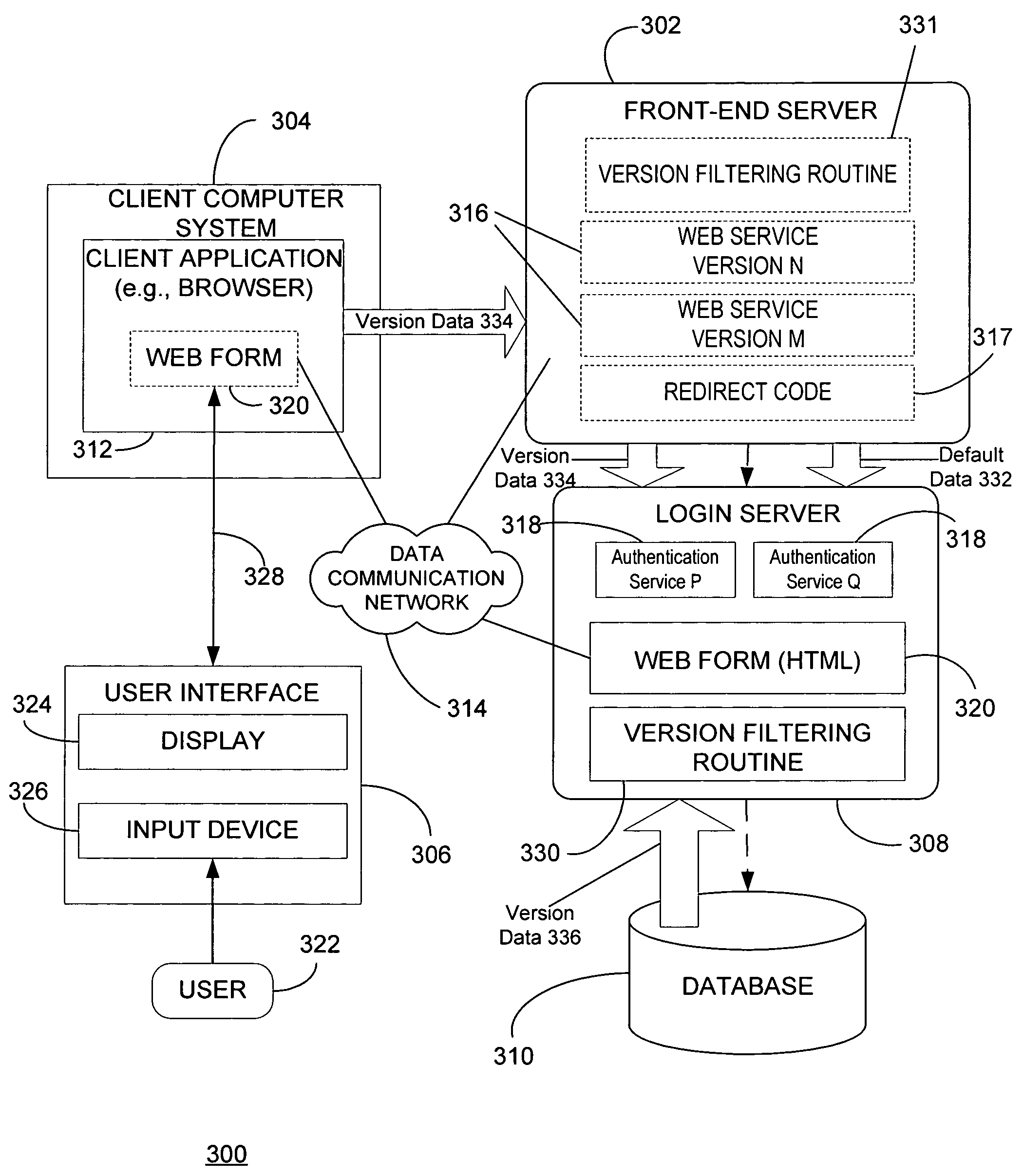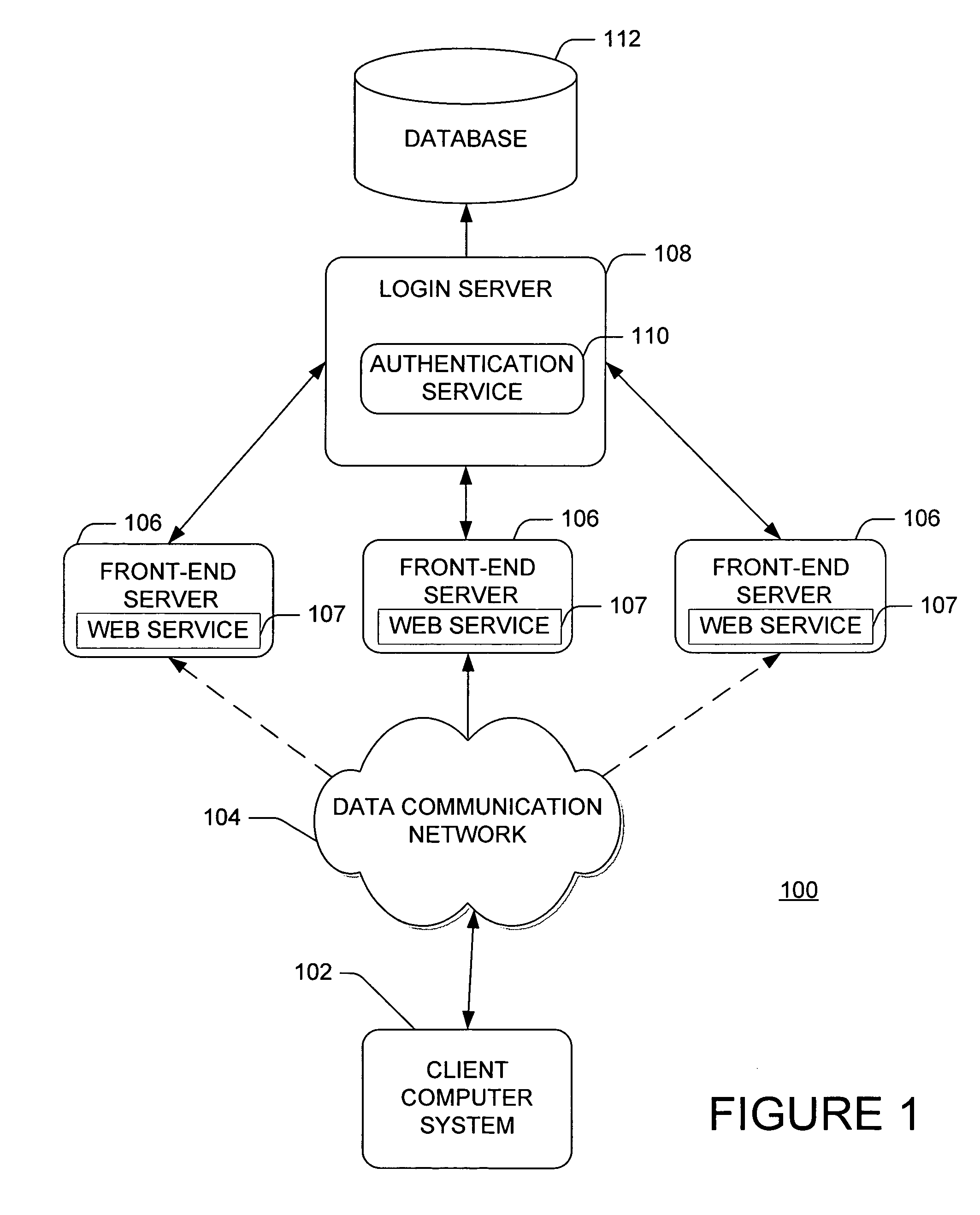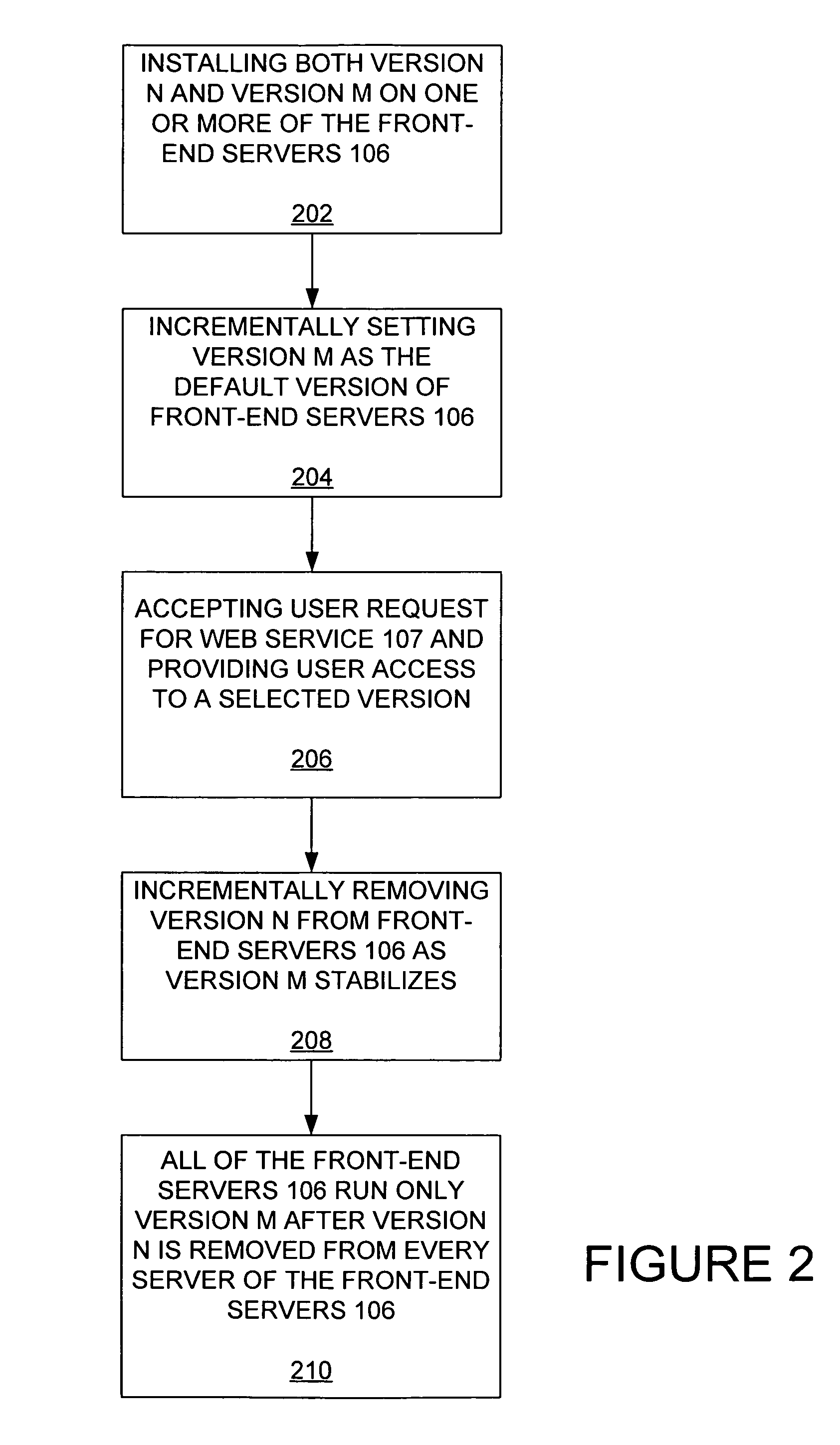Method and system for staged web service upgrade from an existing version to a different version
- Summary
- Abstract
- Description
- Claims
- Application Information
AI Technical Summary
Benefits of technology
Problems solved by technology
Method used
Image
Examples
Embodiment Construction
[0022]FIG. 1 generally shows an exemplary network environment 100 in which the invention may be utilized. A client computer system 102 is coupled to a data communication network 104. In this exemplary embodiment of the invention, data communication network 104 is the Internet (or the World Wide Web). However, the teachings of the invention can be applied to any data communication network. Multiple “front-end” servers 106 are also coupled to data communication network 104 to allow communication between front-end servers 106 and client computer system 102. Front-end servers 106 may also be referred to as “web servers” or “network servers” generally. In operation, client computer system 102 may access a web service 107 provided by one or more of the front-end servers 106 via data communication network 104. However, prior to allowing client computer system 102 to access web service 107, front-end servers 106 may redirect client computer system 102 to a login server 108, which provides a...
PUM
 Login to View More
Login to View More Abstract
Description
Claims
Application Information
 Login to View More
Login to View More - Generate Ideas
- Intellectual Property
- Life Sciences
- Materials
- Tech Scout
- Unparalleled Data Quality
- Higher Quality Content
- 60% Fewer Hallucinations
Browse by: Latest US Patents, China's latest patents, Technical Efficacy Thesaurus, Application Domain, Technology Topic, Popular Technical Reports.
© 2025 PatSnap. All rights reserved.Legal|Privacy policy|Modern Slavery Act Transparency Statement|Sitemap|About US| Contact US: help@patsnap.com



